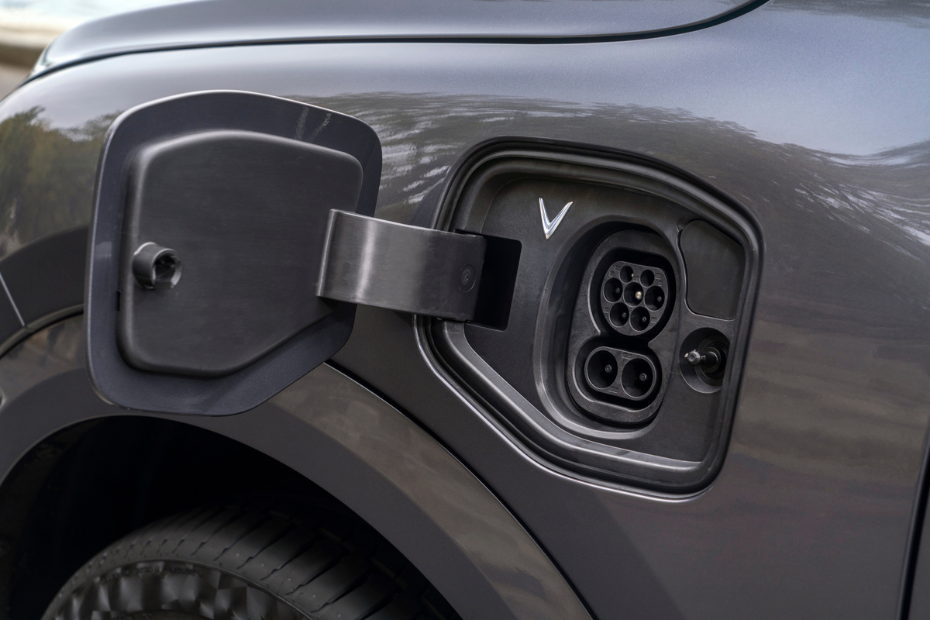Why VinFast Uses Li-ion Batteries In Its EVs

Lithium-ion (Li-ion) batteries are one of the most popular types of battery for use in EVs. They’re also used in consumer electronics, laptops and other portable devices. The key advantages to Li-ion batteries include their high energy density, low self-discharge rate and long cycle life. Below we’ll discuss each of these characteristics and why they make Li-ion batteries so desirable for use in consumer electronics products.
The ability to store large amounts of electricity at a low weight is especially useful for EVs since it allows them to travel further between charges than combustion engines do on gasoline or diesel fuel alone.

Battery Cost
Li-ion batteries have a high initial cost, but they’re cheaper than nickel cadmium batteries. The cost of Li-ion batteries is expected to decrease as technology improves.
Energy Density
One of the most important things to consider when choosing a battery is its energy density. Energy density, or power density, is the amount of stored energy in a battery. It’s measured in watt-hours per liter (Wh/L) or watt-hours per kilogram (Wh/kg). Li-ion batteries provide exceptional capacity with the highest energy density in the rechargeable-battery market (100–265 Wh/kg). This makes charging a Li-ion battery simpler, faster, and more durable.
In general, an increase in energy density means that you can store more electricity in less space and with fewer materials—which makes your EV lighter and leaves more room for other components.
Battery Lifecycle
A full charge cycle is when the battery is discharged to zero and then recharged to full capacity. Thus, using a Li-ion battery until it’s at 75% capacity and then plugging it into recharge doesn’t constitute a full charge cycle. When the battery has recharged back to full, users can still use 75% of the remaining capacity before recharging the battery—only then has the battery gone through a full charge cycle. A quality Li-ion battery can last about 1,000 full charge cycles.The lifecycle of a battery is a measure of how many times it can be fully charged and discharged before it reaches the end of its useful life. A Li-ion battery should last 1,000–2,000 cycles before reaching this point, depending on how it’s used.
Lightweight & Compact
Lithium and carbon electrodes, which are commonly used in Li-ion batteries, are lightweight. As a result, li-ion batteries are much smaller and lighter than their older counterparts such as lead-acid batteries. For example, a typical 51Ah Li-ion battery (about 6–7kg) weighs roughly the same as a 24Ah lead-acid battery but has more than twice the capacity.
Wide Operating Temperature Range
The operating temperature range of Li-ion batteries is an important factor when considering the use of these products. Specifically, they can operate in ambient temperatures ranging from -40°C to +60°C (-40°F to 140°F). This wide operating temperature range means that Li-ion batteries are suitable for a variety of applications and environments. Moreover, Li-ion cells maintain excellent performance over their entire lifetime even as temperatures fluctuate significantly throughout the day or season.
Performance and Longevity
Li-ion batteries are highly efficient and ideal for high-power applications. Li-ion batteries can produce up to 3.6 Volts, which is three times higher than their nickel alternatives. Due to their slow self-discharge rate (around 1.5–2% per month) Li-ion batteries have a long shelf life.
Eco-friendly
A Li-ion battery is considered environmentally friendly because it contains lower levels of toxic heavy metals than other types of batteries. Cadmium, lead, and mercury have long been used as important battery components, but prolonged exposure to these metals, as well as improper disposal, is hazardous to humans, animals, and plants.
Li-ion Battery Technology and Vinfast
VinFast has used Li-ion batteries in the VF 8, Vietnam’s first smart electric car model, with notable benefits such as:
- Range of ~285km on a single full charge. With fast charging available at VinFast charging stations nationwide, the VinFast VF 8 can travel approximately 180 km after just 18 minutes of charging.
- The Li-ion battery in the VinFast VF 8 has a very high capacity density (up to 42 kWh). And, because it boasts a very low self-discharge rate, capacity loss is minimized even when the car is not in use.
- The Li-ion battery in the VF 8 meets IP67 standards, allowing it to be submerged in water up to 1m deep for 30 minutes—suitable for America’s road and weather conditions.
- The Li-ion battery in the VF 8 can operate reliably through a wide range of temperatures. As a result, using and charging Li-ion batteries outside is safer for users while also lowering the risk of fire and explosion.
- Li-ion batteries last longer than other rechargeable batteries. They have an average lifespan of more than 8 years based on charging frequency and traveling distance, and can even last from 10–12 years depending on usage. After that time, they can still retain 70% of their original capacity.
Although Li-ion batteries have many advantages over other rechargeable batteries, their performance and durability are still highly dependent on the user’s usage patterns and maintenance of the battery.
Bạn cần đăng nhập để tương tác với nội dung này: Đăng nhập.


